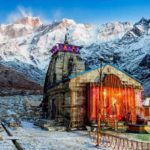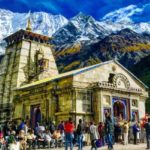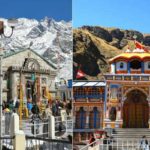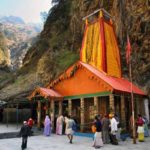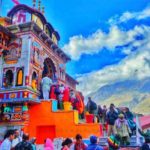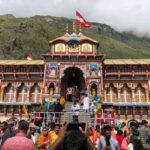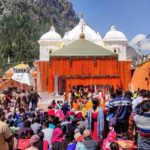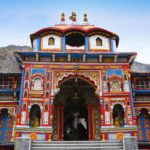History of Kedarnath Dham, a popular Hindu temple, tucked away in the lap of Garhwal Himalayas, some 221 km from Rishikesh in Uttarakhand, is one of the twelve Jyotirlinga temples of Lord Shiva. Lying against the backdrop of the magnificent Kedarnath Mandir Range, at an altitude of 3580 meters, the splendid Kedarnath Dham is where the devotees come seeking the blessings of Lord Shiva. Kedarnath Mandir is said to have been constructed by Adi Shankaracharya in the 8th century A.D. The nearby flowing Mandakini River, mesmerizing vistas and splendid sceneries in the form of the snow-clad mountains, rhododendron forests, and salubrious environment make Kedarnath Dham Yatra, a tranquil and picturesque place to be at History of Kedarnath Dham.
The devotees experience immense peace of mind while undertaking a Kedanath temple spiritual tour. The temple and nature’s milieu is so divine that it always rekindles human beings’ faith in the Almighty. The temple has survived one of the worst flash floods in 2013 of all time in the state, hence enhancing its sacredness and the mystique in the eyes of the devotees. Devotees flock to Kedarnath pilgrimage tour site every year,as a part of Chardham Yatra circuit. Indeed, Kedarnath in Uttarakhand is one of the most prominent pilgrimages, particularly for the Hindus and spiritual seekers.
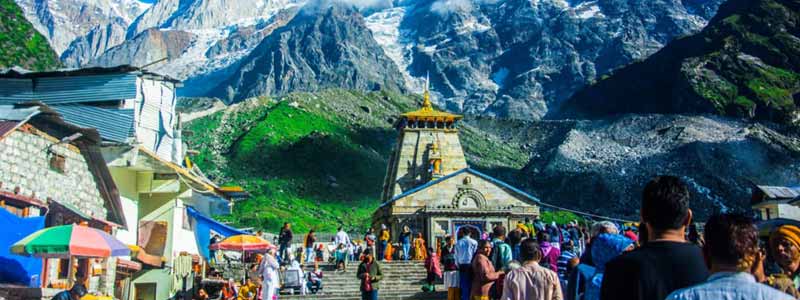
Kedarnath Temple History
Kedarnath Temple is one of the 12 Jyotirlingas, which are considered to be sacred shrines and pilgrimage sites by Hindus. The temple was built by Adi Shankaracharya in the 8th century AD at a height of 3584 m above sea level. The temple has been visited by many kings and queens such as Chandragupta Maurya, Ashoka Gupta emperor etc., who came here for offering prayers to Lord Shiva regularly on Fridays or Saturdays respectively during their reigns from 326 BC onwards till their fall from power in 250 BC respectively (Ashoka’s grandson Pushyamitra sent him back after he had taken away his daughter) History of Kedarnath Dham.
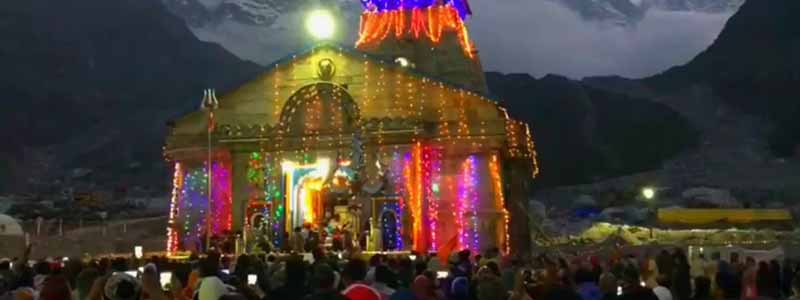
Kedarnath Architecture
Kedarnath Temple is a beautiful example of ancient Indian architecture. The temple is made up of grey stone with a square shape, and it has an imposing statue of Lord Shiva in its main hall. The temple has been decorated with murals from different periods, which depict scenes from Hindu mythology as well as Christian artisans who decorated this place during its construction time (from the 12th century onwards).
Kedarnath is built in the shape of a square, with four entrances on each side. It has an octagonal tower on its eastern side and two additional spires on its southern and northern corners. The main entrance faces east towards the sun rising over the Vindhyachal mountain range (or Vindhya). The temple’s entrance porch has a large monolithic image of Lord Shiva that has been carved out of black granite stone by Adi Shankaracharya himself
Kedarnath Dham is a Hindu holy town located in the Indian state of Uttarakhand. The temple was built by Pandavas after they visited Kedarnath on their way to heaven following their victory over evil forces at Kurukshetra during the Mahabharata war History of Kedarnath Dham.
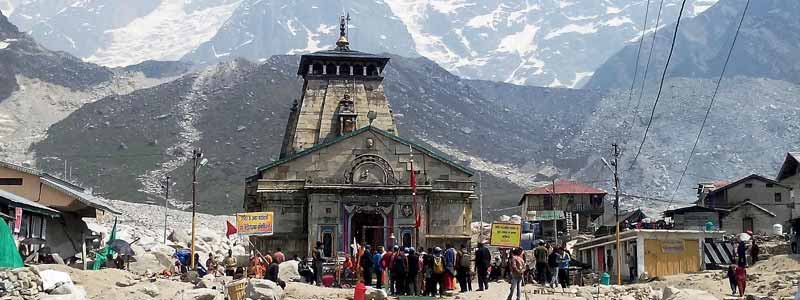
Best Time To Visit
It is suggested to visit Kedarnath during summer (April to June) when the temperature is moderate. The temperature is generally between 15-30 degrees Celsius.
Places To Visit Near Kedarnath Temple
The incredible valley of Kedarnath is amongst the most notable pilgrimage sites that are beautifully nestled in the district of Rudraprayag, Uttarakhand. This majestic temple fascinates devotees from all walks of the country to pray and worship the deity Lord Shiva. Some of the best places to visit near Kedarnath Temple include:
- Shankaracharya Samadhi: This landmark is dedicated to the eighth-century sage, Adi Shankaracharya and is just a 1-minute walk from the History of Kedarnath Dham.
- Vasuki Tal: The beautiful 8 km trek from the Kedarnath Temple, Vasuki Tal is a breathtaking lake, situated at the height of 14,638 feet.
- Rudra Meditation Cave: Lies just 1.5 km from the main Kedarnath Temple complex, Rudra Cave is an underground meditation cave that is also known as the Dhyan Gufa.
- Chorabari Tal: Also referred to as Chorabari Bamak Glacier and Gandhi Sarovar, the total time taken from Kedarnath Temple to this place is just 4 km.
- Kedarnath Wildlife Sanctuary: Known for the alluring flora and fauna species, the sanctuary is located in the Chamoli district, just 2 km away from the History of Kedarnath Dham.
How to Reach Kedarnath?
Gaurikund is the last motorable point before History of Kedarnath Dham. From here, one can walk up, ride a pony, or be hauled up in a palanquin. Alternatively, one can take a very short helicopter ride from Sirsi, Phata, or Guptakashi and then walk up the short distance to seek the blessings of Shiva.
By Flight: Jolly Grant Airport (35 kms from Dehradun) is the nearest Airport to Kedarnath situated at a distance of 235kms. Jolly Grant Airport is well connected to Delhi with daily flights. Gaurikund is well connected by motorable roads with Jolly Grant Airport. Taxis are available from Jolly Grant Airport to Gaurikund.
By Train: The nearest railway station to Gaurikund is Rishikesh. Rishikesh railway station is situated 243kms before Gaurikund on NH58. Rishikesh is well connected by railway networks with major destinations of India. Trains to Rishikesh are frequent. Gaurikund is well connected by motorable roads with Rishikesh. Taxis and buses are available from Rishikesh, Srinagar, Rudraprayag, Tehri and many other destinations to Gaurikund.
By Road: Gaurikund is well connected by motorable roads with major destinations of Uttarakhand state. Buses to Haridwar, Rishikesh and Srinagar are available from ISBT Kashmiri Gate New Delhi. Buses and Taxis to Gaurikund are easily available from major destinations of Uttarakhand state like Dehradun, Haridwar, Rishikesh, Pauri, Rudraprayag, Tehri etc. Gaurikund is connected with Ghaziabad by National Highway 58.

